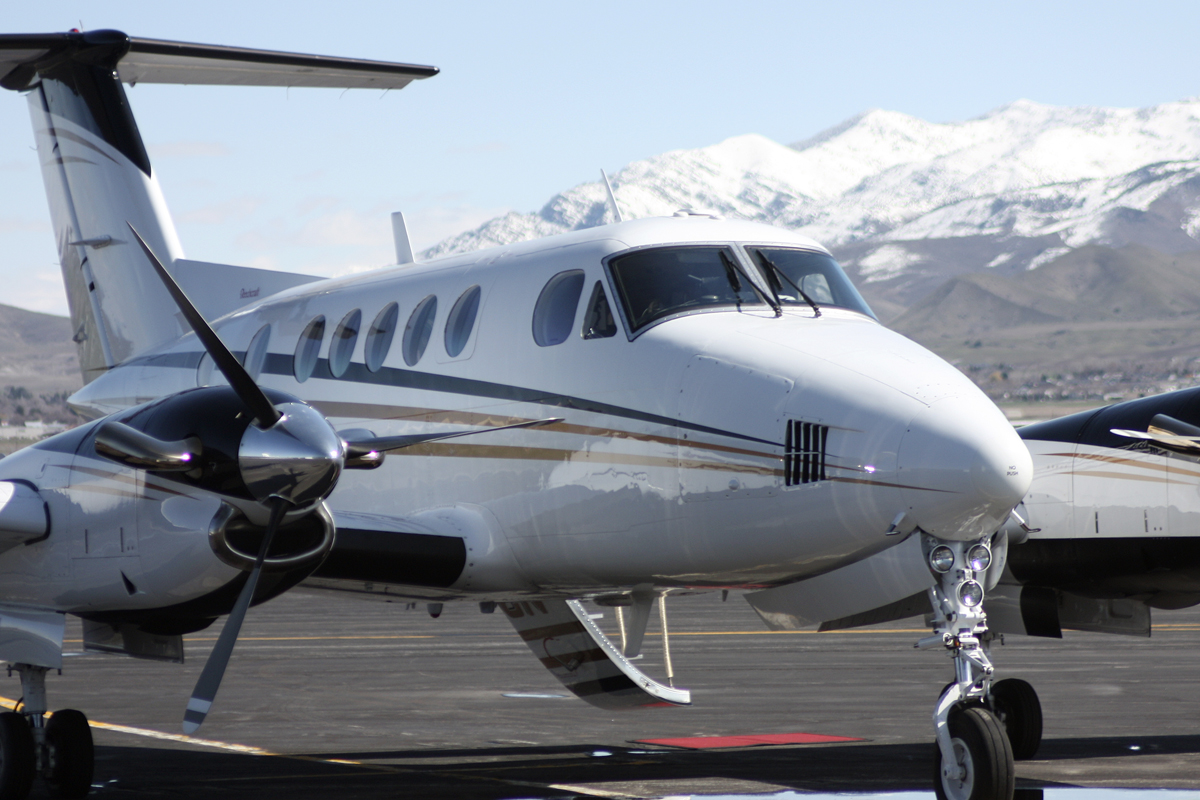Aviation program upgrades simulator
A green glow luminesced from the control lights cover inside the USU aviation school’s new Redbird airplane simulator as assistant chief flight instructor Aaron Dyches programmed a flight to Truckee, Calif., on a computer screen.
Students, instructors and directors gathered around the back of the simulator at the Logan-Cache Airport to peek into the cockpit displaying a 220-degree panoramic view of the Sierra Nevada Mountains. With the click of a button, heavy snow started to fall on the surrounding screens and the virtual plane showed signs of turbulence.
Every possible flight route in the world can be programmed into the simulator.
“We could go to Dubai,” Dyches said. “It has a world base. Our other simulator only has 200 possible destinations.”
The computerized airplane lifts off the ground and soars over mountains, houses and lakes, crossing the terrain at approximately the same speed as a real plane. A compass on the control panel directs the pilot to their set destination.
“The controls are hyper-sensitive,” Dyches said. “You have to make small changes more often.”
On Thursday, April 21, the aviation technology program will welcome all to see the new simulator for themselves, and even give it a test run, free of charge.
Every year USU’s College of Engineering allocates funding to the aviation technology program, which helped them purchase this learning tool worth approximately $60,000, said Nolan Clifford, director of aviation. Kurt Becker, the engineering and technology education department head, was key in working with the College of Engineering dean to allocate the necessary funding. The program will charge $46 per hour for those who wish to use the simulator and are not enrolled in the advanced aviation course.
It took three years for Dyches and other aviation technology personnel to research and decide which simulator would best suit USU students and be most cost efficient.
“This is the technology that pilots are using in the industry,” Clifford said. “It’s more realistic and the capabilities are direct. It gives the students the ability to do instrument training in the simulators. You can pause it, you can talk about it, you can replay it and the instructor can slow it down and introduce any kind of scenario.”
There are about 150 students enrolled in the aviation technology program who are actively learning how to fly while about 60 are taking the necessary courses in preparation to leave the ground behind the controls of one of USU’s DA40 and DA42 Diamond fleet airplanes.
“The inside of the simulator resembles pretty accurately the cockpits of the planes the students fly,” Dyches said.
Outside the simulator is a computer depicting the back end of the virtual plane as it blazes through stormy weather. If a student crashes the plane due to a rough landing, the plane starts smoking.
“Here, students can learn how to cope with failure,” Dyches said. “We hope for the best, but we plan for the worst.”
The aviation program puts their students in an airplane cockpit before teaching them in a simulator, because airplanes are less sensitive to control, he said.
“It makes it really easy to learn because you can program real faults,” said flight instructor Jeff Wegener. “It really helps them to know what can happen in icy conditions, and what can really happen to the airplane in these conditions.”
Instructors will continue to use the old regional jet simulator, Clifford said, which is a model from the early ‘80s and is still an “excellent training aid.”
As of late, about 30 flights take off per day from the Logan-Cache Airport, and USU owns 17 of the airplanes in use.
– catherine.meidell@aggiemail.usu.edu

